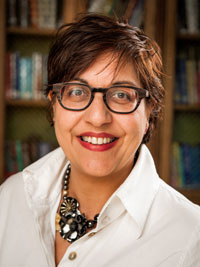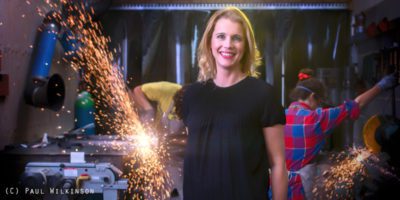
Introducing International Women in Engineering Day
Hello and welcome to issue 82, our celebration of International Women in Engineering Day. For those readers outside the engineering world, International Women in Engineering Day is organised by one of our favourite organisations, the Women’s Engineering Society.

Dawn Bonfield MBE, past President and former chief executive appeared in the first ever edition of Womanthology and we’ve worked together closely ever since. Their current President, Benita Mehra flew the flag for female engineers in our recent BAME Women issue, and Kirsten Bodley, current chief executive appears in this edition.
International Women in Engineering Day has grown out of National Women in Engineering Day that ran for the first time in 2014. The reaction from the engineering and broader STEM community has been to embrace the idea wholeheartedly. It’s the first year the event has officially gone international and this reflects the desire of the sector to reach out to girls and women to communicate the world of opportunities engineering opens up for them.
No more oily rags
Careers in engineering have traditionally had a perception problem. Engineering imagery often used to be dull and uninspiring – pictures of men in hard hats and boiler suits mending grimy machinery – old fashioned oily rag type pictures.
According to figures from Engineering UK, school girls are often put off STEM subjects with a heavy drop off in the number of girls studying physics between GCSE (49% of candidates) to A-level (22% of candidates). This is partly because society can still deem physics to be one the ‘hard’ subjects that girls and women will struggle to get their heads around. (There’s obviously no substance to this outdated myth, but like so many myths, it is persistent.) There are also myths that you had to be a ‘genius’ to study physics or maths.
Try, try again
It’s only in recent years through my conversations with engineers, scientists and mathematicians that I’ve come to realise that success isn’t about having some kind of natural aptitude or special ‘gift’, it’s about the approach. If at first you don’t succeed, try, try again.
Reflecting back to when I was at school, the boys in class certainly weren’t all STEM geniuses, they had just been conditioned differently by society. They were encouraged to have the confidence to put forward their ideas and make mistakes when doing calculations, whereas in a mixed group girls who put forward their ideas and made a mistake had a harder time.
Adapt to survive
Women are notoriously adaptable, and, in my own experience, if they aren’t made to feel welcome in a particular space and their ideas aren’t appreciated, they will move on and focus their efforts elsewhere. Ironically, the adaptability and ingenuity shown by so many girls in finding new areas where they do feel welcome after they have been repelled by lack of inclusivity in STEM is why women have so much to offer engineering. If they sense the status quo isn’t going to let them get on, they use the Darwinian adapt to survive model and move on.
This has been exacerbated by the lack of knowledge of parents about the incredible range of career opportunities open to girls in STEM. The IET has done some incredible work in this area to inform parents about the ways they can support their children, showing that it is possible to engage girls and to make them feel welcome and valued by taking an inclusive approach.
Bright hope for the future
In researching this piece, I came across the wonderful story from 2013 of Ann Makosinski from British Columbia in Canada (who was 15 at the time but had been inventing things since the was seven years old) and I couldn’t resist sharing this with you. Ann had the brilliant idea to create a torch (or ‘flashlight’ for our US and Canadian readers!) that was powered solely by the body heat of the person holding it. Watch this YouTube of her explaining it.
From the looks of things, Ann has only gone on to achieve more – four years later she’s a student at the University of British Columbia, an inventor who has since been included on the Forbes 30 Under 30 list and a seasoned TEDx speaker, who’s no doubt on the path to a hugely successful career. Interestingly though, Ann is pursing her career as an inventor whilst studying for a literature degree, so it shows that you don’t have to sacrifice your love of the arts in order to pursue a career in STEM.
A waste of very good brains…
Her wonderful ingenuity and creativity of thought took me back to a quote from Liz Tanner, Professor of Biomedical Materials at the University of Glasgow:
“…Half the population is female, so if they are not doing science and engineering half the available brains are not being used. It is a waste of very good brains. There is nothing to say that women cannot do science and engineering…”
Interestingly, the same waste of brains and talent applies when men are discouraged from pursuing traditionally female led career paths.
This simply has to end. So, on International Women in Engineering Day on 23rd June, let’s come together to share more stories of the new female faces of engineering. The world faces many challenges in the coming years and we can’t tackle these if we don’t draw from the widest range of talent and ideas available. Let’s stop female engineering brains going to waste.





